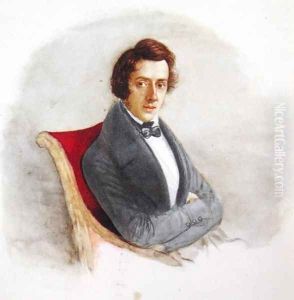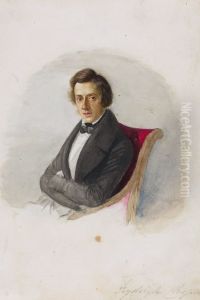Maria Wodzinska Paintings
Maria Wodzinska was a Polish noblewoman born on January 7, 1819, in Warsaw, then part of the Russian partition of Poland. She was most prominently known for her connection with the famous Polish composer and pianist Frédéric Chopin, as well as her own work as an artist. Maria came from a well-educated and cultured family, her father being a Polish nobleman and her mother from a wealthy family. She was the third of five children, and her family environment fostered her artistic talents from a young age.
Maria Wodzinska is often remembered for her engagement to Chopin, which lasted from 1835 to 1837. During this period, she created one of the most iconic portraits of the composer, which remains well-regarded for its intimacy and delicate portrayal. Despite their deep affection for each other, their engagement was broken off, largely due to Chopin's fragile health and financial instability. This relationship, however, has been immortalized in the annals of Romantic-era history and adds a personal dimension to the understanding of Chopin's life and works.
After her relationship with Chopin, Maria continued her life in the arts. She married Count Józef Skarbek, a relative of Frédéric Chopin's godfather, in 1841. Maria was not just a painter but also a skilled musician and a patron of the arts. Her home was a cultural hub, attracting many intellectuals and artists of the time. Her artistic output includes a number of portraits, sketches, and watercolors, showcasing her talent and her engagement with the artistic trends of her era.
Maria Wodzinska's contributions to art, however, have often been overshadowed by her association with Chopin. Nevertheless, her works were appreciated in her time, and she participated in various exhibitions. She died on December 7, 1896, in Florence, Italy, leaving behind a legacy that not only tells the story of her personal life but also reflects the cultural and artistic endeavors of Polish nobility in the 19th century. While not as widely recognized as some of her contemporaries, her work remains a subject of interest for those studying Polish art and the broader Romantic movement.

